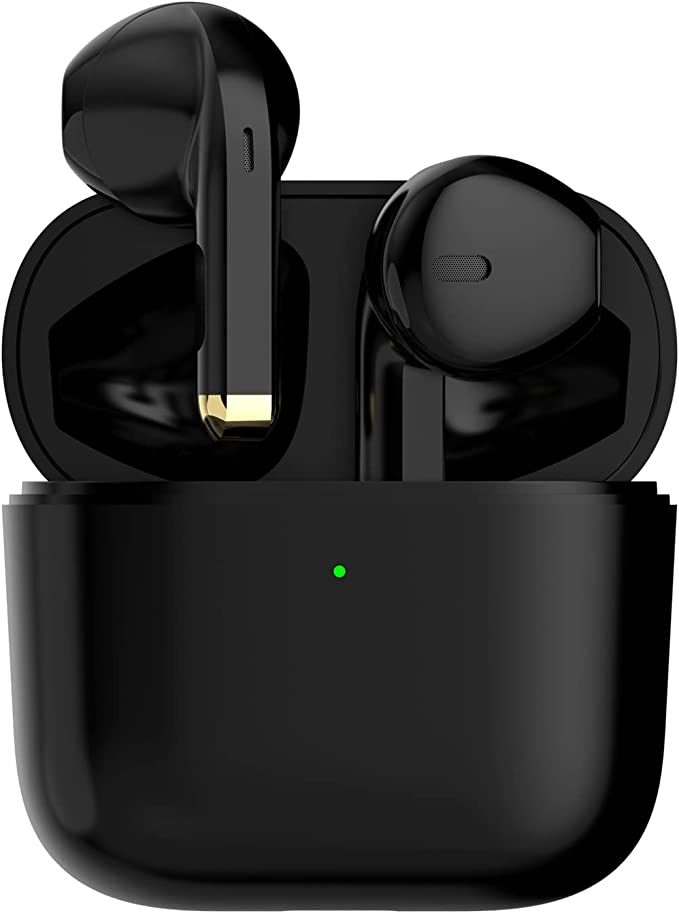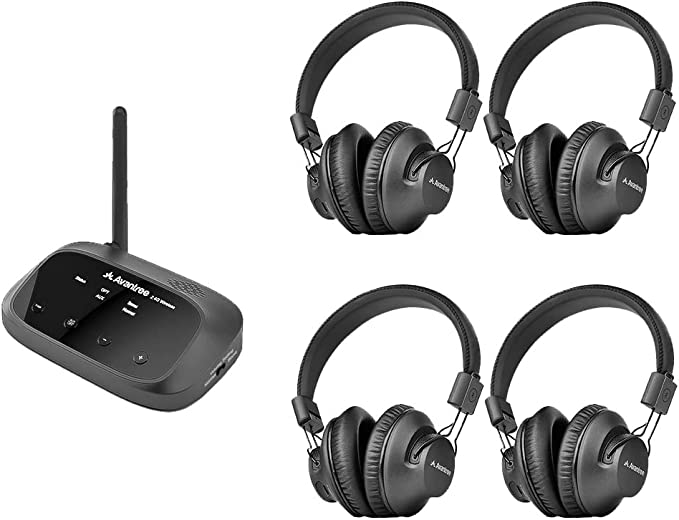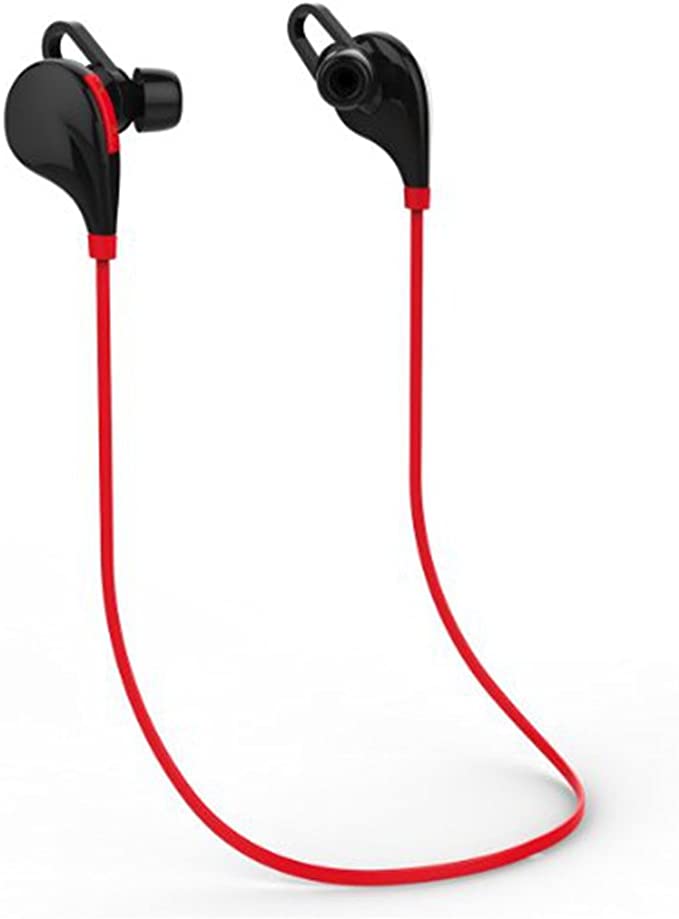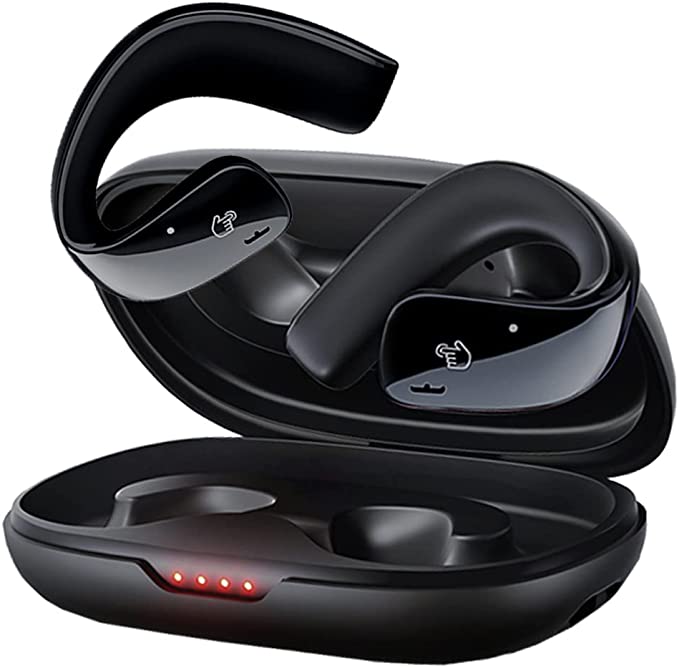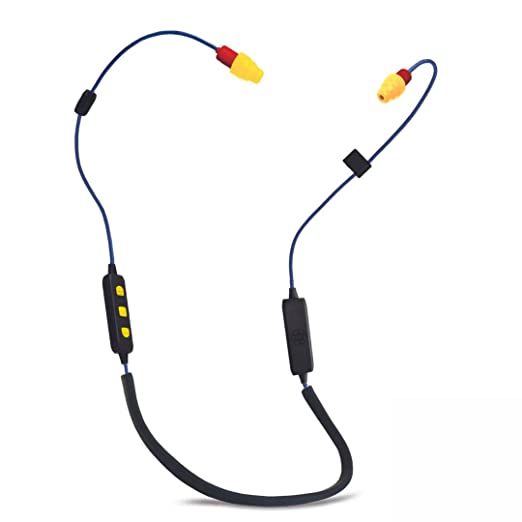kurdene DBK05 Wireless EarBuds: Tapping into Sunshine for Uninterrupted Audio
Update on May 15, 2025, 4:05 a.m.
We’ve all been there, haven’t we? That sinking feeling as the battery icon on our beloved device dips into the dreaded red. In our hyper-connected lives, this “battery anxiety” is a near-universal modern malady. It’s particularly acute when we’re out in the wild, on a long journey, or simply away from the comforting tether of a wall socket. Our wireless earbuds, those faithful companions delivering our daily soundtrack, news, or connection to loved ones, are often the first to succumb. But what if, just what if, these essential gadgets could quietly sip energy directly from the most abundant power source we know – the sun? This isn’t a far-fetched dream from a science fiction novel; it’s a tangible reality, exemplified in consumer electronics like the kurdene DBK05 Wireless EarBuds and their innovative Solar Power Charging Case. This little piece of tech invites us to explore a fascinating intersection of materials science, physics, and our unending quest for true portability.
The idea of harnessing the sun’s energy isn’t new, of course. It’s a story сцена (stena - Russian for ‘scene’ or ‘stage’, metaphorically setting the stage) nearly two centuries in the making, filled with serendipitous discoveries and brilliant minds. Long before sleek earbuds were even a glimmer in an engineer’s eye, the journey began.

Echoes from the Past: How We First Learned to Catch Sunlight
Our story starts not in a gleaming modern lab, but in 1839, with a curious young French physicist named Edmond Becquerel. While experimenting with electrolytic cells made of silver chloride or silver bromide placed in an acidic solution, he noticed something peculiar: when one of his silver electrodes was illuminated by sunlight, it generated a small electric current. He had, quite by accident, observed the photovoltaic effect – the direct conversion of light into electricity. It was a faint whisper of a phenomenon, a scientific curiosity rather than a practical power source, but a monumental first step.
The trail then leads us to 1883, across the Atlantic, where American inventor Charles Fritts crafted the first rudimentary solar cell using selenium coated with a thin, semi-transparent layer of gold. Fritts’s cells were astonishingly inefficient, converting less than 1% of the absorbed light into electricity, yet they were a landmark. He even envisioned a future where these cells would power cities, a remarkably prescient thought for his time. Imagine, for a moment, the audacity of that vision, powered by such humble beginnings!
Yet, the true understanding of why light could create electricity remained elusive until the dawn of the 20th century and the revolutionary ideas of Albert Einstein. In 1905, one of his “annus mirabilis” papers explained the photoelectric effect (for which he would later win the Nobel Prize). Einstein proposed that light itself behaves as if composed of discrete packets of energy – quanta, which we now call photons. When these photons strike a suitable material, they can knock electrons loose, setting the stage for an electric current. This wasn’t just an explanation; it was the theoretical key that would eventually unlock practical solar power.
The final, crucial leap towards the solar technology we recognize today occurred in 1954 at Bell Laboratories. Daryl Chapin, Calvin Fuller, and Gerald Pearson, while initially trying to develop power sources for remote telephone systems, created the first practical silicon solar cell. Their invention, achieving an efficiency of around 6%, was a watershed moment. Suddenly, Becquerel’s curious observation and Fritts’s hopeful experiments, underpinned by Einstein’s genius, coalesced into a viable technology. From powering early satellites like Vanguard I – giving it the charming moniker “the grapefruit satellite” which broadcast for years thanks to its solar cells – to the sophisticated panels on our rooftops and, yes, even to the diminutive charging case of an earbud, the lineage is clear.

The Sunbeam’s Secret: Unpacking the Magic of Photovoltaics
So, what exactly is this “photovoltaic effect” that these pioneers uncovered and that now promises to top up our personal audio devices? Let’s demystify the magic.
At its heart, it’s a beautiful dance between light and matter, specifically within materials called semiconductors. Silicon is the most famous semiconductor in this context, forming the backbone of most solar cells you see, from vast solar farms to the tiny panel on the kurdene DBK05 case.
Imagine sunlight not just as a warm glow, but as a relentless shower of these tiny energy packets – photons – hurtling towards Earth. When these photons strike a silicon solar cell, their journey takes a dramatic turn. If a photon carries just the right amount of energy (which is related to the light’s color or wavelength), it can be absorbed by an atom within the silicon. This absorbed energy isn’t just stored as heat; it performs a more exciting trick: it “excites” an electron, essentially giving it a energetic kick strong enough to break free from its atomic bonds. Think of it like a perfectly aimed billiard cue ball (the photon) striking a stationary ball (the electron) and sending it skittering across the table.
Now, having a bunch of liberated electrons isn’t enough to create a useful current. We need to get them moving in an organized fashion. This is where the clever internal architecture of a solar cell, specifically something called a “p-n junction,” comes into play. Most solar cells are made by sandwiching two slightly different types of silicon together: p-type (positive-type, with an abundance of “holes” or electron vacancies) and n-type (negative-type, with an excess of free electrons).
Where these two types meet, a natural electric field forms – a sort of built-in slope or one-way street for electrons. When light creates those free electrons (and their corresponding “holes”), this internal field swiftly sweeps the electrons towards the n-type side and the holes towards the p-type side. This separation of charges creates a voltage difference across the cell, much like the positive and negative terminals of a battery. If you then connect these two sides with an external circuit – say, the charging circuitry of the earbud case – these collected electrons will flow through that circuit, creating a direct current (DC). Voilà! Sunlight has been transformed into usable electrical energy. The kurdene DBK05 snippet mentions this “transformation from solar energy into DC electrical energy for charging,” and this is the fundamental science at play.

Miniature Marvels: Squeezing Solar Power into Our Pockets
The journey from Bell Labs’ first relatively bulky silicon cell to the sleek, integrated solar panel on an earbud case like that of the kurdene DBK05 (which the manufacturer states incorporates solar technology released around August 2022) is a testament to decades of engineering ingenuity in miniaturization and efficiency.
Scaling down solar technology isn’t just about making things smaller; it presents a unique set of challenges. The power a solar cell can produce is directly related to its surface area – the more sunlight it can catch, the more power it can generate. When you shrink that surface area to fit onto a device that slips into your pocket, you’re inherently limiting its potential power output. Therefore, maximizing the efficiency of these tiny cells (how much of the absorbed sunlight is converted into electricity) becomes absolutely paramount.
Engineers and material scientists have worked tirelessly on this. They’ve explored various types of photovoltaic materials beyond traditional crystalline silicon, such as thin-film solar cells (like amorphous silicon, Cadmium Telluride, or CIGS), which can be made incredibly thin and even flexible, making them suitable for conforming to the curved surfaces of consumer devices. While the specific type of solar cell used in the kurdene DBK05 case isn’t detailed in the provided snippet, it would undoubtedly be a technology optimized for small-form-factor applications.
Durability is another critical factor. A solar panel on an earbud case needs to withstand the daily tumbles, scratches, and general wear and tear of being carried in pockets and bags. This necessitates robust protective coatings that are transparent enough not to impede light absorption significantly but tough enough to protect the delicate photovoltaic material underneath.
Finally, cost is always a driver in consumer electronics. Integrating solar cells adds to the bill of materials and manufacturing complexity. The challenge is to incorporate this functionality without an exorbitant price increase, making it an accessible feature rather than a high-end novelty. The $19.99 price point mentioned for the kurdene DBK05 (at the time of the snippet) suggests an effort to make this technology mainstream.

Living with Light: The Real-World Dance of Solar-Charged Audio
So, you have your solar-charging earbud case. What does this mean for your daily life, particularly for those of us in North America with its diverse landscapes and lifestyles?
The Bright Side (Benefits & Scenarios):
The most obvious benefit is the enhanced freedom it offers, especially for outdoor enthusiasts. The product information for the kurdene DBK05 highlights its suitability for “outdoor activities like camping and hiking.” Imagine you’re on a multi-day trek in the Rockies, or perhaps enjoying a sun-drenched afternoon at a California beach. Power outlets are nowhere in sight. Being able to place your earbud case in the sun during a break, allowing it to passively gather energy, can be incredibly convenient. It might mean the difference between having your motivating playlist for the last leg of your hike or enduring it in silence. For campers, it’s one less thing to worry about charging via a bulky power bank, at least for their earbuds.
There’s also a subtle psychological, and perhaps even a small practical, nod to environmental consciousness. Every bit of energy harnessed directly from the sun is energy not drawn from the grid, which in many places still relies heavily on fossil fuels. While the individual impact of a single earbud case is minuscule in the grand scheme of global energy consumption, it fosters a connection to renewable resources and can be a small, satisfying step for the eco-aware consumer.
And let’s not forget the “emergency sip” scenario. You’re traveling, your earbuds are dead, your case is depleted, and you have a long layover or bus ride ahead. If you can find a sunny spot by a window (though direct outdoor sunlight is always best), you might just coax enough charge into the case to get you through a few more songs or an important podcast episode.
Shades of Reality (Limitations & Considerations):
It’s equally important to approach this technology with realistic expectations. As the kurdene DBK05 information rightly points out, it’s ideal for outdoor use and “not indoors.” Photovoltaic cells are hungry for photons, and the intensity of direct sunlight is orders of magnitude greater than typical indoor lighting. A cloudy day will also significantly reduce charging efficiency, as will placing the case at a suboptimal angle to the sun.
Users of any small-scale solar charging device quickly learn that patience is a virtue. The relatively small surface area of an earbud case panel means it won’t be performing charging miracles. It’s unlikely to fully charge a depleted case in a short amount of time, especially compared to the rapid speeds we’re accustomed to with USB-C wall chargers. Think of it more as a “trickle charger” or a “power supplement” – a way to extend battery life or keep the case topped up – rather than a primary, rapid charging solution in all circumstances. Managing this expectation is key to appreciating the feature for what it is: a convenient bonus, particularly in specific off-grid situations.
More Than Just Sun-Kissed: The Earbuds Themselves
While the solar charging capability is undoubtedly the star attraction for a discussion like this, it’s worth noting that the kurdene DBK05 earbuds are presented as a complete audio solution. The provided information mentions features such as “Premium Deep Bass Stereo,” a “Light-Weight” design, and the standard conveniences of “Bluetooth Headphones” with a “Built-in Microphone,” compatible with both “iPhone,Android.” This is important because, for any such technology to gain traction, the core product must also be competent. The solar feature, however innovative, is an enhancement to the primary function of delivering audio and enabling communication. Users will expect good sound quality, comfort, and reliable connectivity, with the solar charging acting as a significant value-added proposition.

Horizons Aglow: The Future of Personal, Portable Power
The integration of solar charging into devices as personal and portable as an earbud case is more than just a neat gimmick; it’s a small but significant indicator of a broader trend in consumer electronics and our relationship with energy. We are moving, albeit slowly, towards a future where our personal gadgets might become increasingly energy-autonomous.
The science continues to advance at a rapid pace. Researchers are constantly developing new photovoltaic materials that are more efficient, more flexible, and even transparent. Imagine future smartphone screens that double as solar chargers, or clothing woven with photovoltaic fibers that power wearable sensors. Concepts like perovskite solar cells, for instance, show immense promise for high efficiency and low-cost manufacturing, potentially revolutionizing how and where solar energy can be harvested.

The kurdene DBK05, with its solar-assisted charging case, offers a glimpse into this evolving landscape. It represents an accessible application of a technology that empowers individuals, even in a small way, to harness the clean, abundant energy of the sun. It encourages a more conscious approach to power consumption and subtly shifts our perspective from being solely reliant on the grid to actively participating in personal energy generation.
As we continue to fill our lives with an ever-increasing array of portable electronics, the dream of devices that can sustain themselves, drawing power from their surroundings, becomes ever more compelling. Today, it might be an earbud case catching some rays on a windowsill or a backpacker’s pack; tomorrow, it could be an integral, almost invisible, part of the very fabric of our mobile lives. And that, truly, is a future worth looking forward to – a future powered, at least in part, by a pocketful of sunshine.






